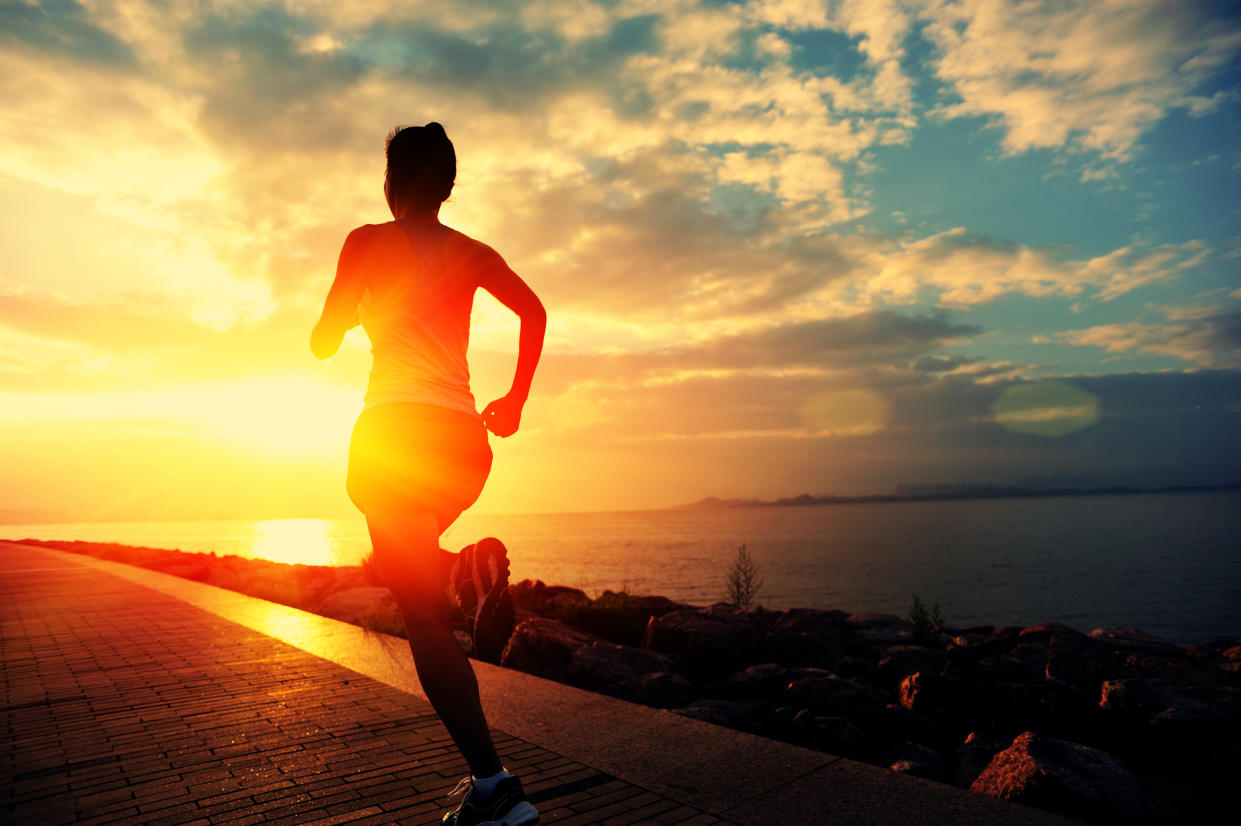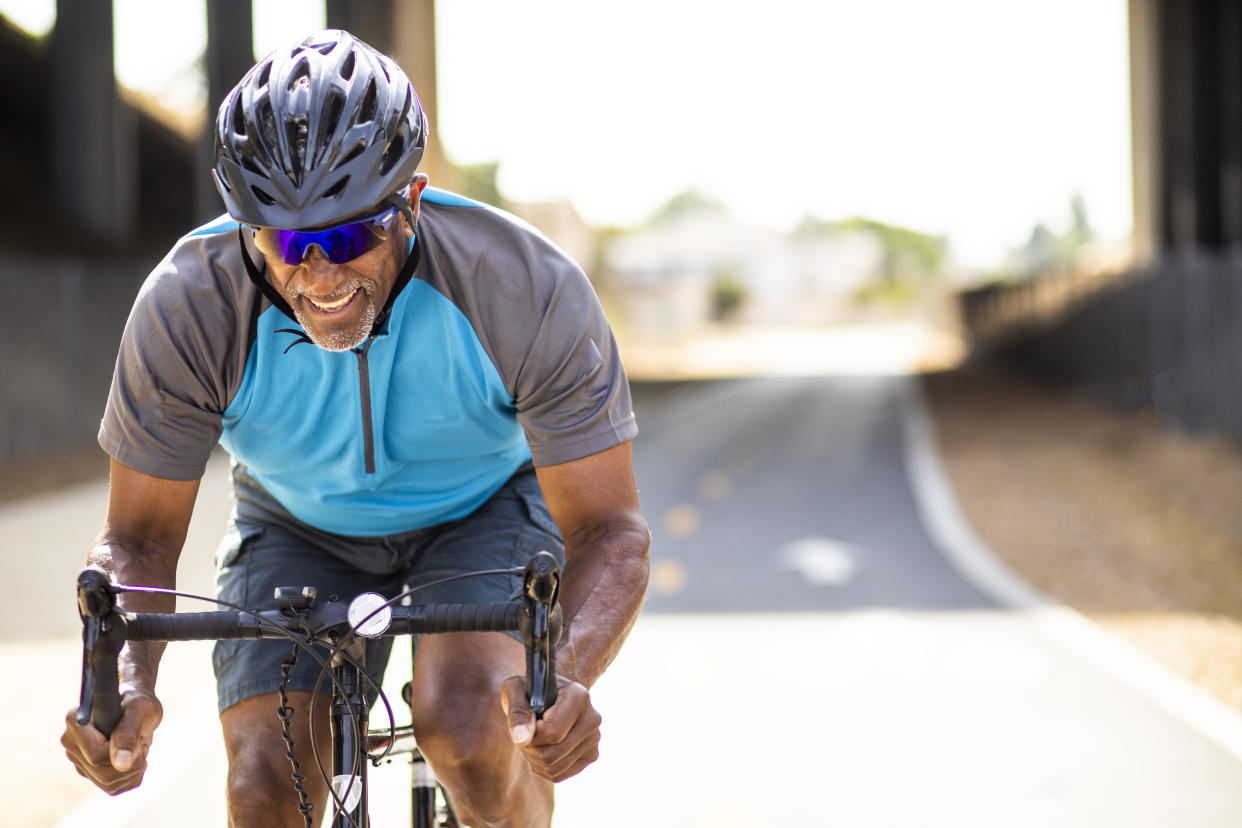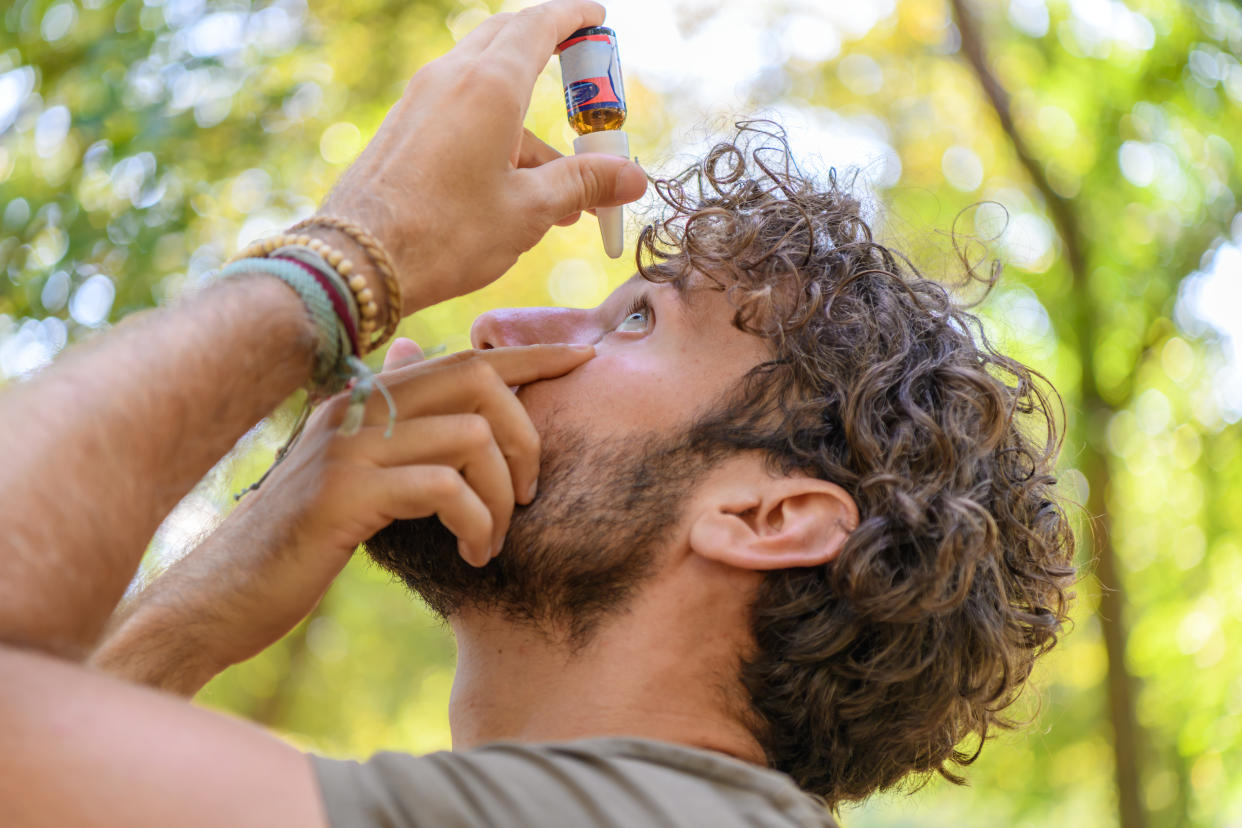Exercising outdoors? Make sure you pack these allergy symptom-fighting tools

Katie Kauffman — a photographer in Tacoma, Wash. — says she’s had an iffy relationship with the outdoors since she was a kid because of allergies.
“I grew up in a family that loved going hiking and doing outdoor stuff, and I basically just had to be miserable through it,” Kauffman tells Yahoo Life. “Then as an adult, I basically didn’t do anything outdoors because of how bad my allergies were.”
As if a runny nose, lots of sneezing and itchy red eyes weren’t enough to deal with, Kauffman says if her allergies get bad enough they can sometimes trigger her asthma, creating “a whole other set of problems.”
But Kauffman says things changed when the COVID-19 pandemic hit; that’s when she decided she had to buckle down and find a way to truly manage her allergies once and for all.
“The pandemic started … and it was like, ‘Well, I’ve got to figure out how to do stuff outdoors or I can’t do anything,’” she says. “‘I can’t do anything indoors and feel safe, so let’s figure out how to do outdoorsy stuff.’”
Many Americans have turned to outdoor exercise during the pandemic — trading in gym memberships for activities like hiking, golfing, tennis and more. But while the great outdoors may be a safer alternative for those wary of COVID-19, as spring blossoms it can also be risky business for seasonal allergy sufferers.
So how can you take your workout outside without also picking up those pesky spring allergens? We asked allergy experts for their top three tips.
Spring allergy workout tip #1: don't work out in the morning

When it comes to conquering allergies for some outdoor exercise, timing is everything. For starters, you may want to rethink that pre-work jog.
“Your highest pollen counts are typically in the morning when the sun starts coming up,” Dr. Mark Corbett, president of the American College of Allergy, Asthma and Immunology, tells Yahoo Life. He recommends waiting until later in the afternoon or evening; or if you can motivate yourself to exercise in the wee morning hours, get your workout in before sunrise.
You’ll also want to keep an eye on your local weather reports. Days with high heat and humidity can lead to higher mold counts. And the wind, humidity and lighting during thunderstorms can break pollen into even smaller particles that are easier to inhale, creating a perfect storm for allergy-sufferers and possibly contributing to a phenomena known as "thunderstorm asthma."
“Asthmatics especially can have severe reactions if they go out after a thunderstorm,” Corbett says. “So I probably wouldn’t want to exercise after a thunderstorm.”
An ideal time to exercise outdoors? During a gentle, windless spring shower.
“Rainfall pushes the pollen down,” Melanie Carver, chief mission officer with the Asthma and Allergy Foundation of America, tells Yahoo Life. “So working out during a light rainfall might be one of the best times to be outdoors when you have allergies.”
Spring allergy workout tip #2: cover your eyes and hair

You’ll also want to dress for allergy-fighting success. Carver recommends wearing sunglasses and a hair covering to reduce pollen getting in your hair and eyes.
Those COVID-era masks could also come in handy by reducing contact with pollen. “Many people have reported having fewer seasonal allergy symptoms since wearing a mask,” Carver says.
And don’t worry — it’s safe to exercise with a mask on. Allergies shouldn’t make it more difficult to work out with a mask, so if you’re having trouble breathing you should seek the help of a professional.
“Unless you’ve got significant nasal congestion, just upper respiratory allergies should not really cause you too much trouble with your breathing,” Corbett says of wearing a mask while working out with allergies. “So if [you] have that [you] probably need to go get evaluated for the possibility of asthma.”
Pollen is light-weight and can stick to any type of clothing, so there’s no particular type of material that can save you from allergens. Instead, plan on taking your clothes off and washing them after each workout. And when you’re done, give yourself a good wash, too; Carver and Corbett both suggest taking a shower to rinse off any pollen lingering on your body and hair.
Spring allergy workout tip #3: start your allergy meds early

Fortunately there are plenty of over the counter remedies to help you fight off the allergens and enjoy that sunny spring workout. But whatever your allergy medication of choice is, be sure to start it early.
“You want to start your medications a couple of weeks before the spring season and not wait until you start getting all congested and start having symptoms, because it won’t work as well,” Corbett says. “I always tell my patients, ‘Valentine’s Day or the end of February, put a note in your phone to start your medications.’”
But if you’ve procrastinated or your allergy symptoms are pretty mild, Corbett says taking an antihistamine a few hours before each workout could also do the trick. Nasal steroid sprays — which Carver says are “the most effective treatment for allergic rhinitis” — take longer to kick in, so you’ll want to take those at least several days ahead of time.
For quick relief Carver also suggests a nasal saline rinse to help flush pollen from your nasal passages, or using eye drops if your main symptom is itchy eyes.

Kauffman says her solution has been to flush any allergens and irritants out of her eyes and nose immediately after spending time outdoors.
“The big one, the thing that really helped me, is just washing my face as soon as I get home,” Kauffman says. “I started carrying saline nasal spray and eyewash in my hiking backpack, and as soon as I get back to the car I rinse my eyes out; I rinse my nose out; and that really helped as well — just getting rid of all that stuff as quickly as possible.”
Kauffman says now she’s enjoying more time outdoors.
“I started going hiking, bought a bike. I’ve been trying the outdoor stuff that I really just never did,” Kauffman says.
She particularly enjoys walks in nature with her dog, Ziggy.
“I really like to find trails that my dog and I can do together,” she says. “And we really like narrow paths through the forest.”
Read more from Yahoo Life:
